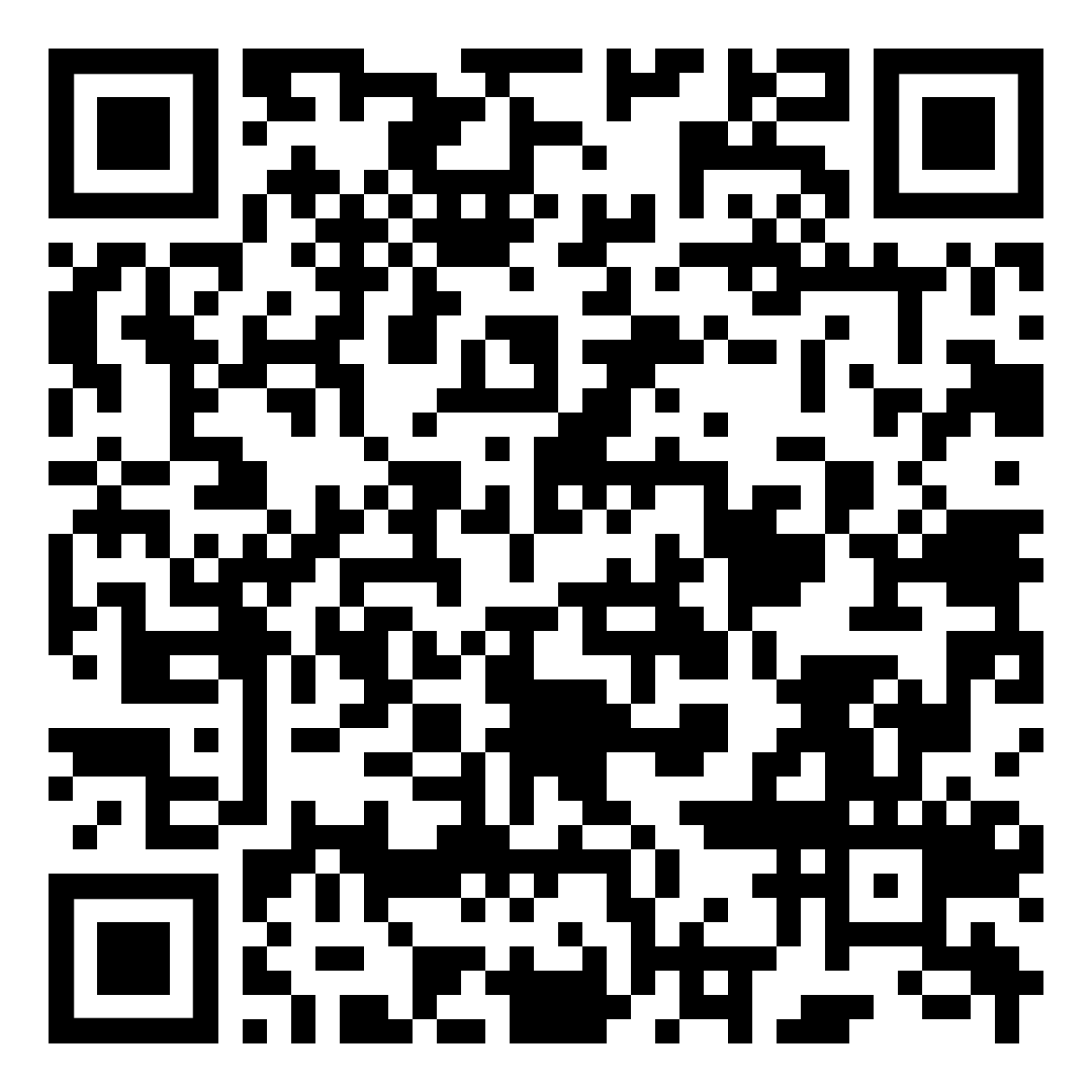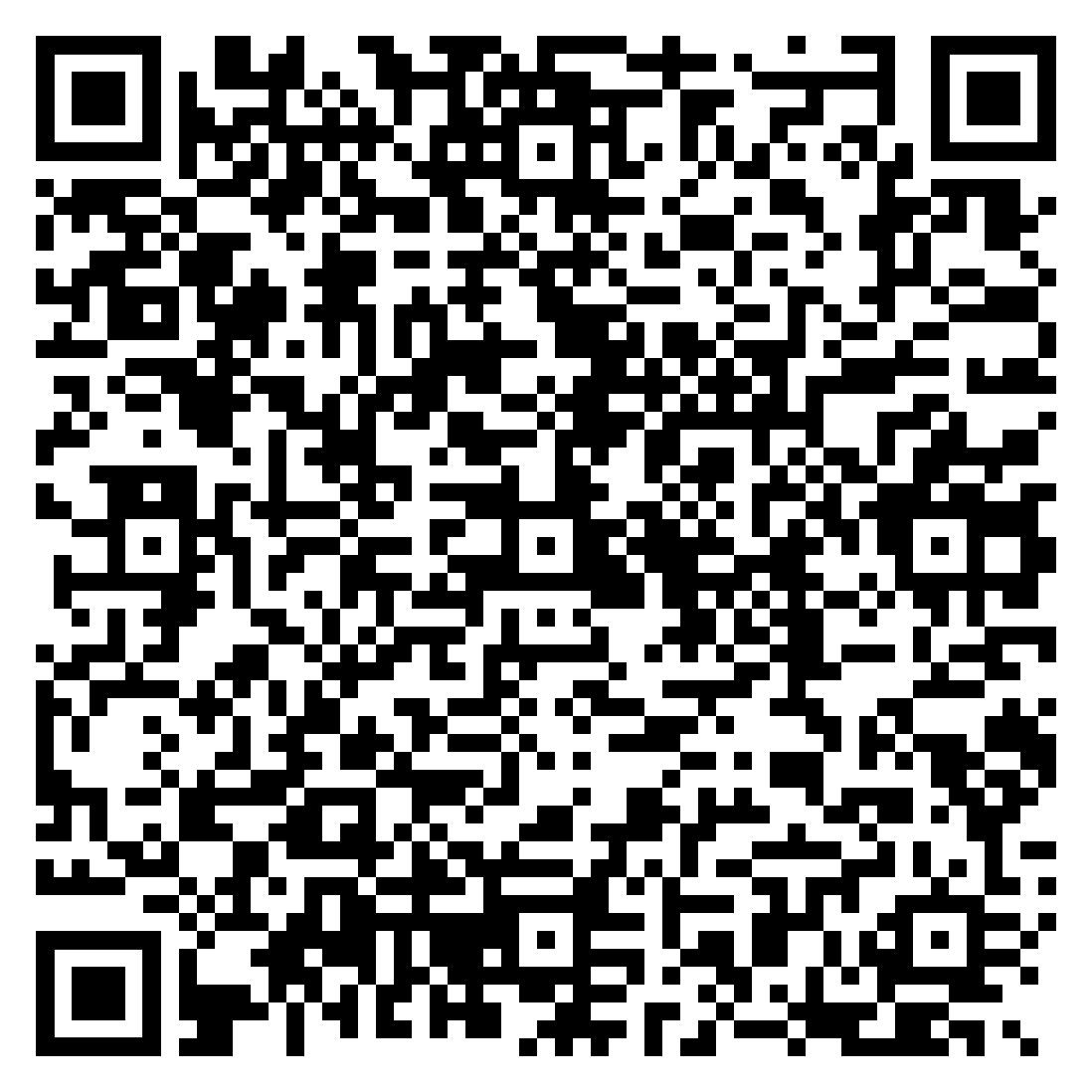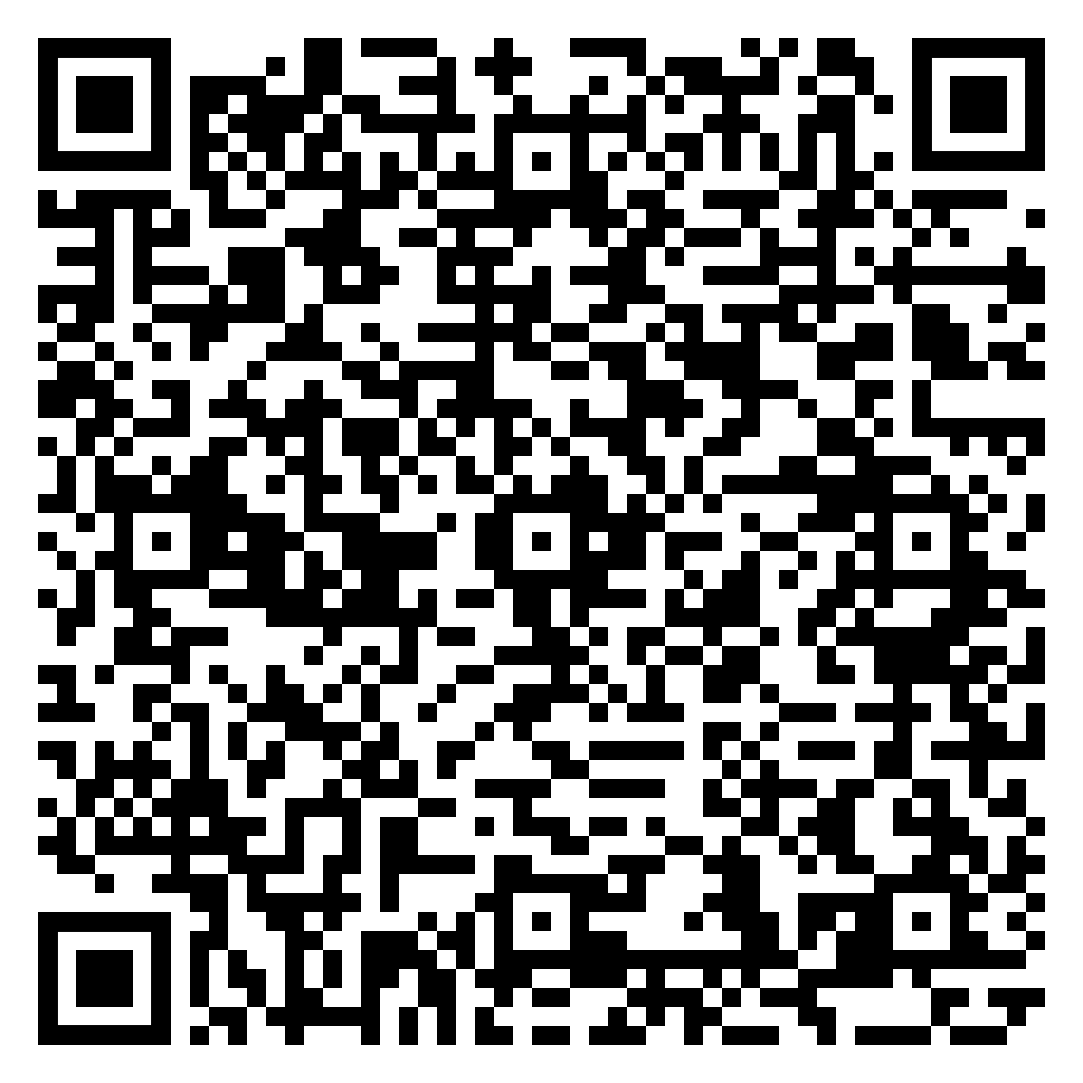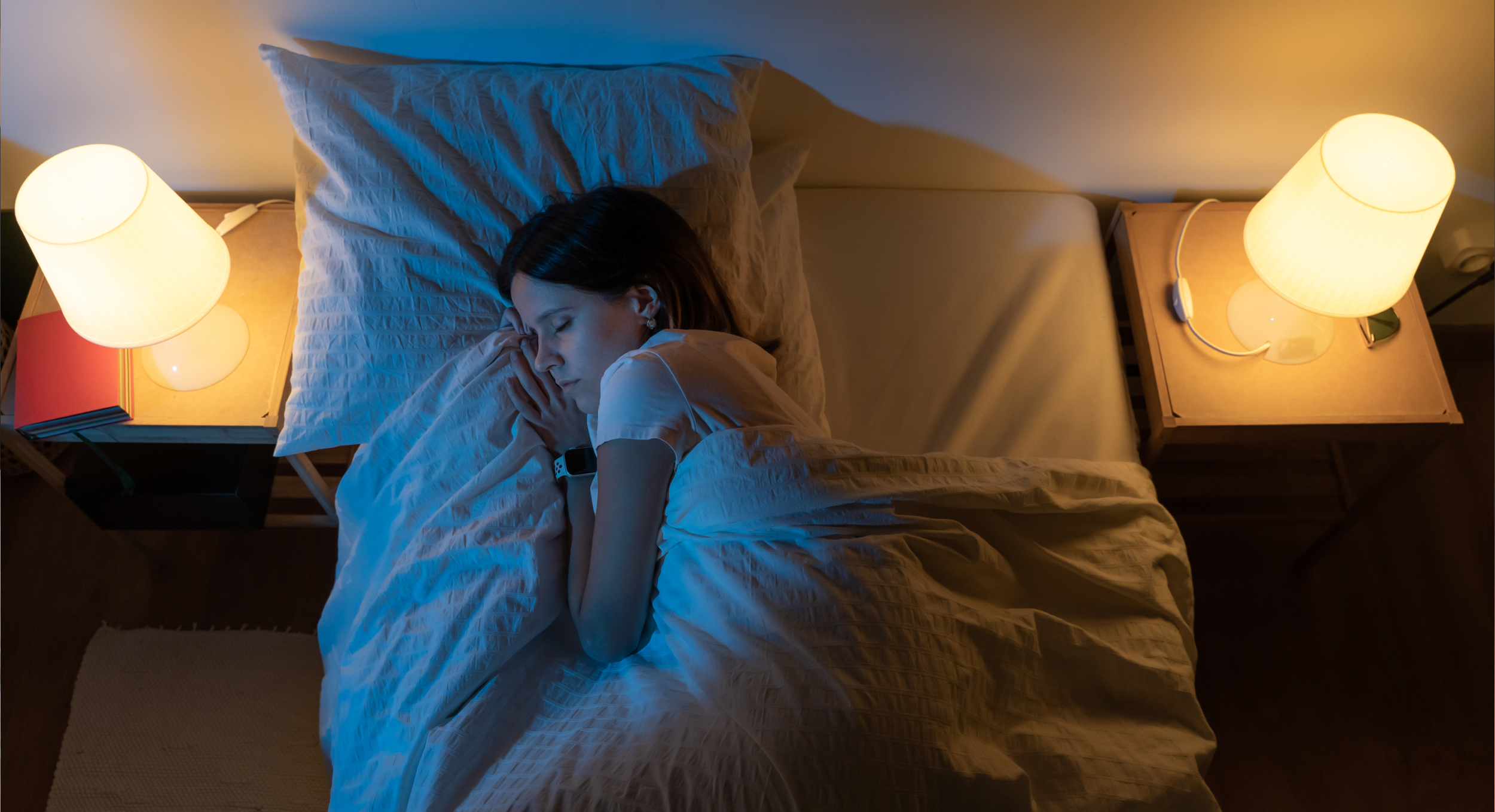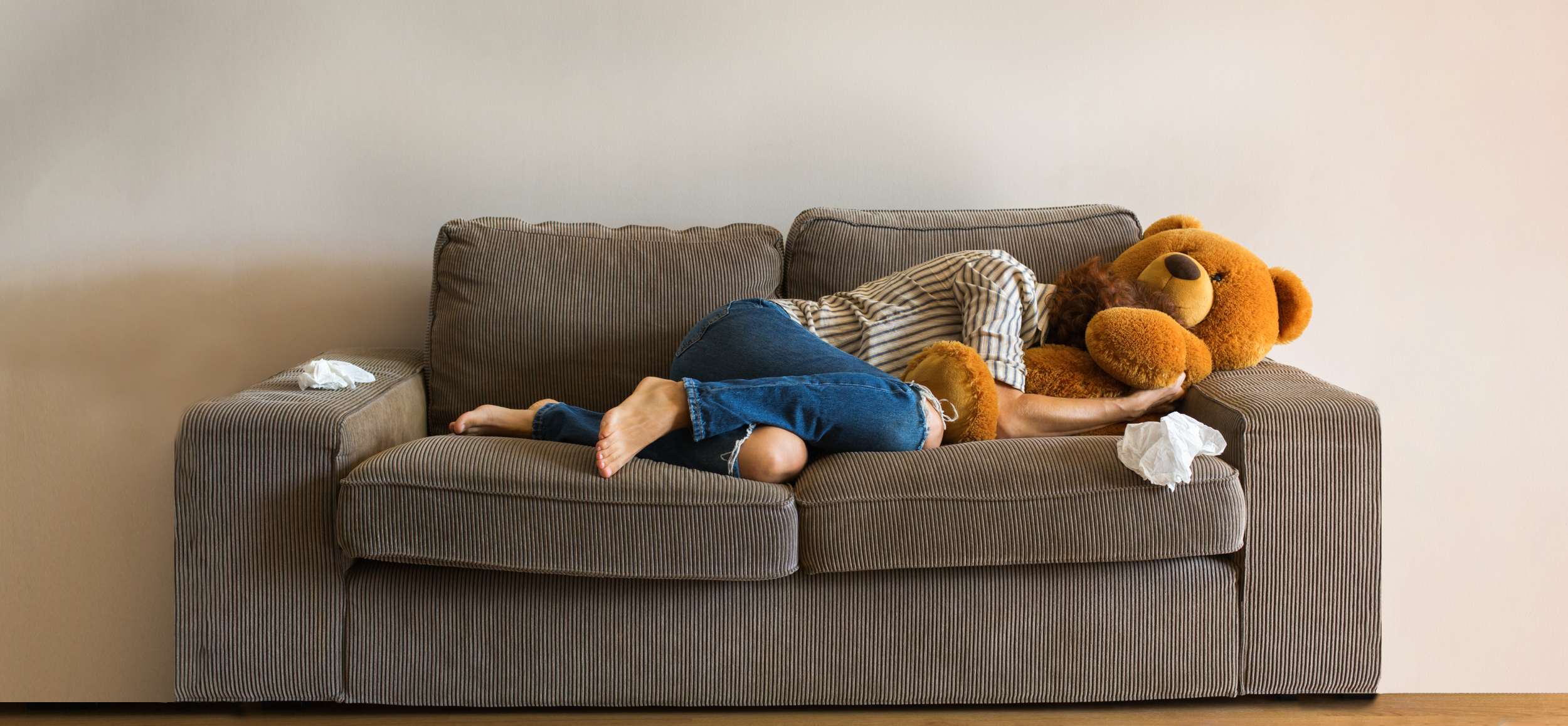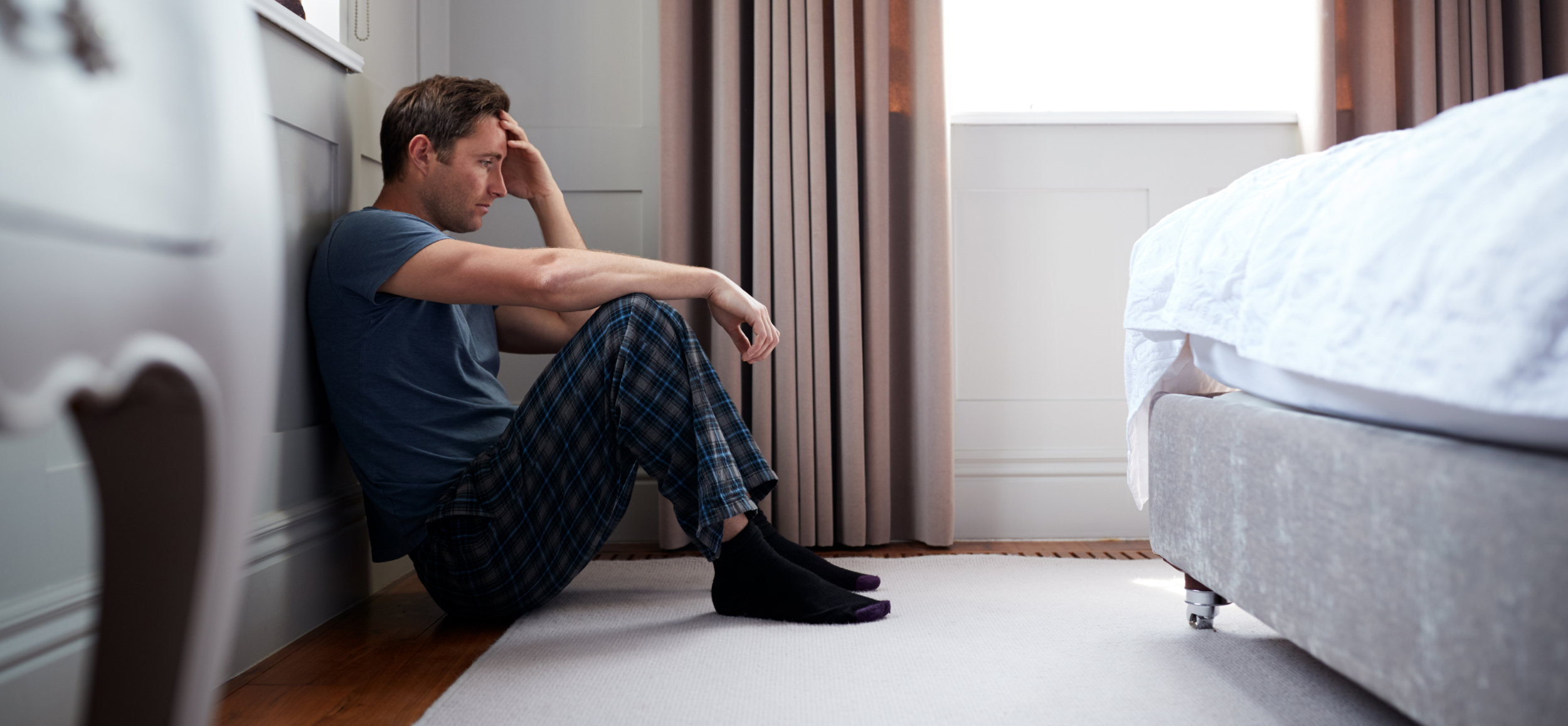
Depression: Manifestations, Types, and Self-Help
In today’s world, the term “depression” is often used to describe feelings of sadness, exhaustion, a lack of strength, energy, desire to do anything, socialize, or go to work. However, in most cases, fortunately, this is not depression. Anyone can get tired, worn out, and experience burnout. This can lead to irritability, sadness, or tearfulness. But simple rest will rejuvenate them, and a genuinely joyful event will flip the emotional switch from negative to positive.
Depression is a severe affective (emotional) disorder where an individual stops feeling joy and pleasure. They find no interest in entertainment, hanging out with friends, or engaging movies. They lack positive feelings altogether, nothing brings them joy, and their life lacks color and flavor. Everything that made their life interesting and meaningful loses its appeal and interest. Any attempt to cheer up or please someone with depression paradoxically results in a worse state: they can’t feel joy and, in addition to the existing negativity, they feel guilt and shame for their emotional helplessness and inability to respond to the support of loved ones.
How can depression manifest itself?
- Apathy, anhedonia.
- Fear, anxiety.
- Sadness, melancholy.
- Somatic disorders (as if something hurts) or bodily pains.
- Irritability, anger.
- The desire to cry.
- Feelings of helplessness and worthlessness.
- A sense of the meaninglessness of any activity and life in general.
- Lack of energy or very little of it, only enough to maintain key survival functions.
- Sleep disturbances: insomnia or the inability to “wake up to live.”
- Disruption of basic needs: appetite, libido, cognitive functions, etc.
Don’t despair! It’s time to try meditation. Our app is specially designed
to help you properly apply meditative practices
These are the most common symptoms and syndromes that can manifest in a depressive state. Various combinations and degrees of severity are possible. There are depressions where a person lies face to the wall and cries, others where they just stare at their phone or TV, and yet others where they constantly eat and sleep, barely managing to go to work, if they go anywhere at all. And there are depressions where a person is sociable and smiling, but upon returning home, contemplates plans and options for leaving life because they see no reason to continue it.
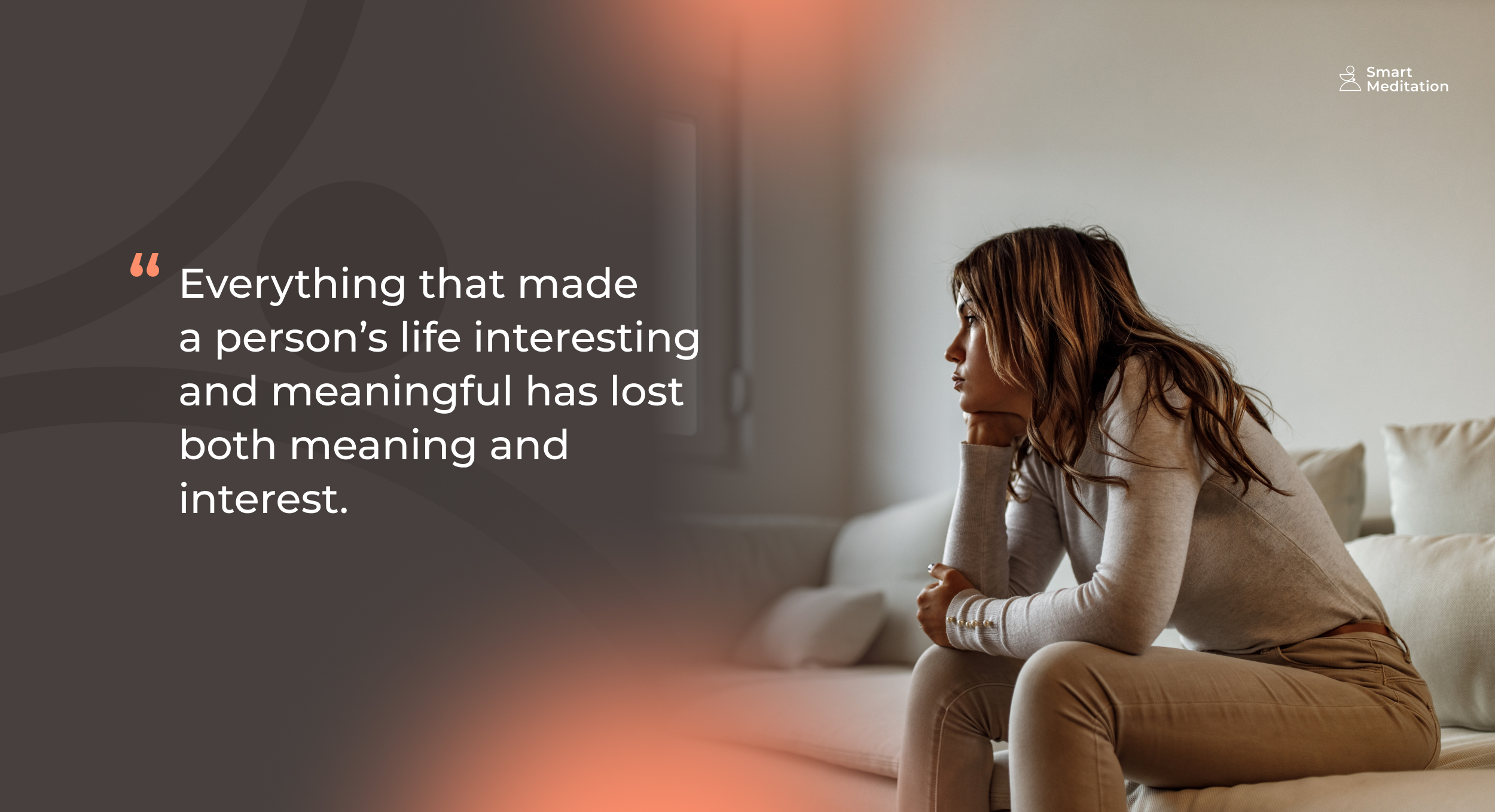
Severe and Mild Depression
Based on the degree of severity, depressions are categorized into mild, moderate, and severe. The last two require hospital treatment, and there’s a high risk of suicide. Often, a person in depression does not commit suicide simply because they lack the strength to do so. This is why depression treatment must be supervised. Mild depression is still depression, but the person can, through willpower, force themselves to do what they should, like washing and going to work. Otherwise, they experience the same powerlessness and a black-and-gray world.
Seasonal Depression
Manifests with a slight decrease in mood, emotional fluctuations, the desire to cry in the evenings, and other symptoms of a depressive nature. Typically, it is mild. It’s called seasonal because episodes of depression occur in the autumn-winter period when there’s little sunlight.
The Smart Meditation mobile app contains the best meditation techniques,
to help you cope with depression
What lies at the root of depression?
It’s unclear. A bouquet of hypotheses proposed over decades only partially explains depression. Depression can be triggered by an external event (exogenous, psychogenic depression). Or it may develop suddenly, out of nowhere (endogenous depression). The biochemical essence involves the disruption of the production and circulation in the body of major neurotransmitters – dopamine, serotonin, and norepinephrine. In severe deficiency states, there’s a feeling of melancholy and irrevocable loss of something important, without which life simply cannot continue. Essentially, this is true: neurotransmitters, like hormones, are life activators, the driving force determining the meaning of any interaction between a person and their environment.
Good News
The good news is that most depressive states encountered by people in modern life have a neurotic, reactive nature. This means that overcoming such depression is entirely possible, but it must be done correctly. First and foremost, it’s essential to consult a doctor – a psychotherapist or psychiatrist – for proper feedback regarding what’s happening. Only a doctor can determine the type of depression affecting you and the specific help you need, including medication.
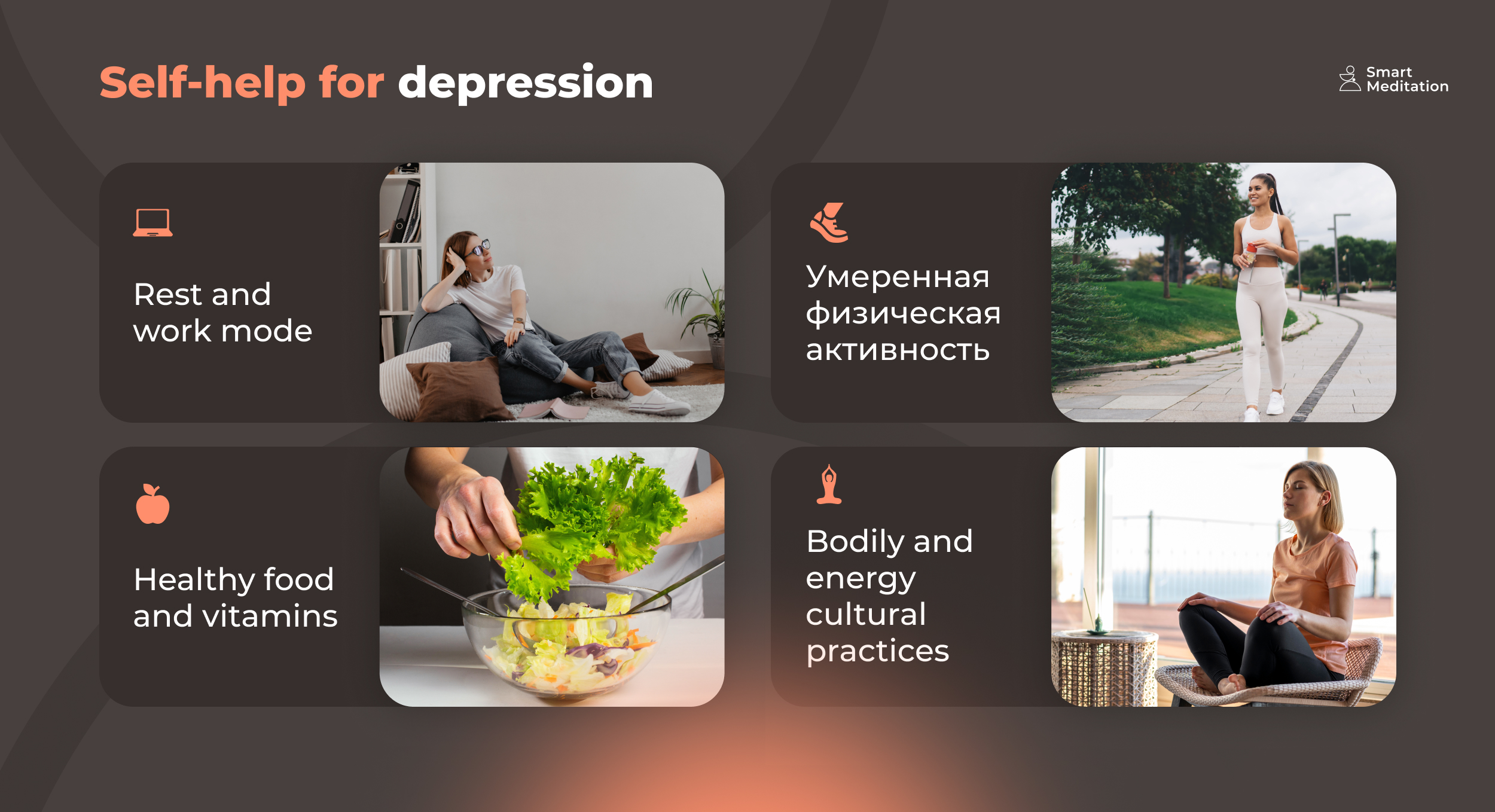
Self-help for depressive states includes:
- Routine: a system of “here I work, here I rest” is fundamentally important for restoring normal functioning, so don’t neglect it.
- Quality food, vitamins, fiber, protein, and fats: what allows the body not to waste resources on extracting nutrients from junk food, but to direct maximum effort to restoring the emotional sphere and mood.
- Moderate physical activity, including walks in the fresh air and light strength training: the best choice for stimulating the production of neurotransmitters.
- Physical practices, including energy and various other meditations: it’s important not to accumulate internal tension and regularly relieve negative emotional load from your nervous system, helping it transition from a depressive mood.
The body, you understand, is capable of much on its own, provided you give it the opportunity and create conditions, doing what truly is within your power.
